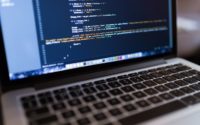An Employee’s Guide to Protecting Sensitive Data and Handling Confidential Information
In today’s digital age, the protection of sensitive data and the proper handling of confidential information have become critical aspects of every employee’s responsibility in the workplace. The consequences of mishandling or breaching sensitive data can be severe, resulting in financial losses, reputational damage, and legal consequences for individuals and organizations alike. This blog aims to provide employees with a comprehensive guide to safeguarding sensitive data, ensuring confidentiality, and promoting a culture of data security within the workplace.
Sensitive Data and Confidential Information
Sensitive data encompasses any information that, if exposed, can harm an individual, organization, or its stakeholders. This may include personally identifiable information (PII), financial records, intellectual property, trade secrets, or any data subject to privacy regulations. Confidential information, on the other hand, refers specifically to data that requires restricted access due to its sensitive nature. It can vary across industries and may include client information, product designs, marketing strategies, or legal documents. Properly classifying and labeling sensitive data helps employees understand its significance and handle it accordingly.
Best Practices for Protecting Sensitive Data
Securing physical documents and storage devices: Physical security measures are essential to protect sensitive information. Employees should follow proper document disposal methods, such as shredding or incineration, for paper documents. Additionally, using locked cabinets or restricted access areas helps prevent unauthorized access to physical records or storage devices.
Implementing strong passwords and authentication measures: Password security is paramount when it comes to safeguarding digital information. Employees should use unique and complex passwords, avoiding common phrases or personal information. Two-factor authentication and biometric identification provide an extra layer of security by requiring additional verification methods for accessing sensitive data.
Encrypting electronic communications and files: Encryption is an effective method of protecting sensitive information from unauthorized access. It involves encoding data into an unreadable format that can only be decrypted with a specific key. Employees should use encryption techniques for email communications and secure file-sharing platforms to ensure data confidentiality.
Regularly updating and patching software and systems: Keeping software and systems up to date is crucial for data security. Updates often include security patches that address vulnerabilities and protect against potential breaches. Employees should enable automatic updates and regularly monitor for available patches to ensure their devices and software are adequately protected.
Handling Confidential Information
Need-to-know principle and limited access: Adhering to the need-to-know principle minimizes the risk of unauthorized exposure of confidential information. Employees should only share such information with individuals who require it to perform their job duties. Access privileges should be granted based on job roles and responsibilities to restrict access to confidential data.
Secure data transfer and communication: When transmitting confidential information, employees should use secure channels to prevent interception or unauthorized access. Personal email accounts or unencrypted messaging apps should be avoided. Instead, secure file-sharing platforms or encrypted email services can be utilized to ensure the confidentiality of sensitive data.
Safeguarding information during meetings and conversations: Confidential information discussed during meetings or conversations must be protected. Employees should follow secure meeting room protocols, such as ensuring no unauthorized individuals are present and not discussing confidential matters in public or unsecured areas. Awareness of eavesdropping risks is crucial, and precautions should be taken accordingly.
Reporting and addressing suspicious activities or breaches: Employees play a vital role in identifying and reporting potential data breaches or suspicious activities. They should be trained to recognize signs of data breaches, such as unauthorized access attempts or unusual system behaviors. Reporting incidents promptly to the appropriate authorities or internal security teams allows for swift action to mitigate the potential impact of the breach.
Employee Responsibilities and Training
Importance of employee accountability: Every employee has a responsibility to protect sensitive data and handle confidential information with care. Adhering to data protection policies and procedures helps maintain trust and ensures compliance with legal and regulatory requirements. Employees must understand the consequences of non-compliance, including disciplinary actions and potential legal ramifications.
Regular training and awareness programs: Ongoing education and training are crucial for promoting a culture of data security within an organization. Employees should receive regular updates on data protection best practices, emerging threats, and industry regulations. This helps them stay informed and adapt to evolving data security practices, minimizing the risk of data breaches.
The Bottom Line
Protecting sensitive data and handling confidential information is a shared responsibility among all employees in an organization. By understanding the types of sensitive data, implementing best practices for data protection, and responsibly handling confidential information, employees can contribute to a secure work environment and protect their organization’s reputation and stakeholders.
By empowering employees with the knowledge and tools to safeguard sensitive data, organizations can build a robust defense against data breaches and foster a culture of data security. Remember, data security is not just an individual’s responsibility; it is a collective effort to protect the valuable information entrusted to us.


